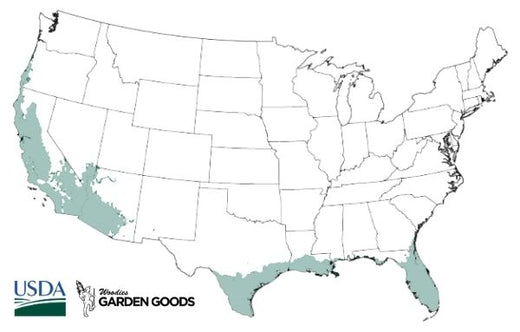Images Depict Mature Plants
Gold Dust Jewel Orchid Plants for Sale Online
Jewel Orchid Macodes sanderiana, more commonly referred to as "Gold Dust Jewel Orchid," is a unique and incredibly striking plant with distinctive white and gold veining throughout its foliage.
These little wonders enjoy high humidity levels, thus they make a great option for terrariums! Additional care requirements include consistently moist soil and low to medium indirect light.
If you are an orchid lover or plant collector, the Gold Dust Jewel Orchid is a must-have addition to your collection!
| Hardiness Zone: | 9-11 |
|---|---|
| Mature Height: | 1 to 1.5 Feet |
| Mature Width: | 12 to 18 inches |
| Classification: | Tropical epiphyte |
| Sunlight: | Bright indirect light to low light, early morning sunlight is ideal |
| Habit: | Climbing |
| Foliage: | Dark Green almost Black |
| Soil Condition: | Needs aeration - Fir bark, lava rocks, moss, clay and charcoal pellets, etc. |
| Water Requirements: | Water thoroughly with filtered water, then allow to almost fully dry before watering again |
| Uses: | Indoor ornamental flowering plant; focal point on a shelf or windowsill; rooms with warmth and humidity |

How to Care for Jewel Orchid Gold Dust
Once you buy a Jewel Orchid, make sure to read about the care instructions that are recommended to keep this plant healthy and thriving.

What kind of soil does a Jewel Orchid Plant need?
Jewel Orchids are epiphytes and they grow on tree bark in their native tropical environments. This means their roots are very unique, and traditional potting soil will suffocate them. Plant your Jewel Orchid in a soil mixture specific for orchids - these mixes are made up of bulky organic materials that retain moisture while allowing lots of air to reach the roots. Fir bark mixed with moss and charcoal are most popular, but clay pellets, lava rocks, or coconut husks work as well. Note: once the soil breaks down over time, you will need to repot your orchid into fresh orchid soil mix. Also, just because they need lots and lots of drainage and aeration does not mean they are truly drought tolerant - they prefer warm humid environments like a bathroom windowsill.
How do I water my Jewel Orchids?
Jewel orchids' roots will actually let you know when they need to be watered (their roots will turn a silver white when dry, and are greener in color when they have enough water). Watering in the morning is best, since orchids have such a strong internal clock. Make sure whatever pot your orchid lives in has lots of drainage, and wait until the soil is nearly bone dry before watering (this is important to prevent root rot). One of two good techniques is to submerge your orchid (roots, pot, soil together) into a bowl of filtered water, and allow it to stay submerged until the roots and soil have absorbed all the water they can. Remove the pot and allow it to drain fully in a sink. The second technique is to simply leave your orchid in a sink or tub and let water run through the soil until it has absorbed as much water as it can, then let it drain fully before removing from the sink. This works with faucet water as long as your water is not too harsh. See more information about other ways to properly water your orchid in additional information below.

How much sun does a Jewel Orchid plant need?
Jewel orchids are tropical plants, used to growing on the sides of much larger trees. They do best in indirect light and lower light environments because they are used to being under a tropical canopy. Also, these plants have a strong natural rhythm between day and night, like cacti and many other plants. They will be happiest in low light spots or spots with filtered light where it is warmer in the day and a little cooler in the evening. Many people recommend windows that receive morning light. Do not allow your orchid to sit in hot afternoon sun or direct light or the leaves will be scorched. You can see more about light conditions for orchids in additional information below.
When do I fertilize my Jewel orchid plant?
If you want to see your Jewel orchid bloom and rebloom, a good fertilizing schedule is going to be important. Once you set up a steady routine it isn't difficult to keep your orchid well fed. Choose a balanced liquid orchid fertilizer, such as Jack's Classic Orchid 7-5-6, and feed approximately every two to three weeks, less in the winter or after blooming is over. It is always best to fertilize your orchids in the morning, since they are plants with natural internal clocks and react differently to water, light and nutrients during the day than they do in the evening.











